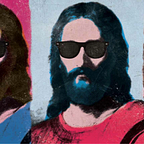Mama Mia, Prognostics Galore!
Super Paper Mario takes the battle between good and evil to the next level
Super Paper Mario is connected to religion in the sense that it contains two ‘Prognostics’ (prophecies) which might be said to compete. The first of these is the Dark Prognosticus, which was taken by the game’s villain, Count Bleck, and possessed him in its quest to destroy all worlds and thus end all of existence. A Light Prognosticus was written to counteract the dark one; it tells the player what they “can do but, unlike the Dark Prognosticus, it does not say what will happen.” This difference in the quality of these items brings up questions which have challenged religion since its creation: can human beings actually know what will happen in the future? Does this supposed knowledge amount to anything more than a call to action?
Given that the Light and Dark Prognostics compete in the way that they do, and that by the end of the game the player has defeated the villain and counteracted his plans, the game hints at the error of prophecy. If the Dark Prognosticus was true, it would have been fulfilled regardless of the player’s action. Additionally, the fact that the player’s action counteracts prophecy suggests a hidden message within the game: individual agency is real and it can have an effect on events. The very fact of a prophecy coming into existence changes the course of time just as any event does. In The Magician’s Companion, Bill Whitcomb observes, “‘One point to remember is that the probability of an event changes as soon as a prophecy (or divination) exists. . . . The accuracy or outcome of any prophecy is altered by the desires and attachments of the seer and those who hear the prophecy,’” (“Prophecy”). In other words, prophecy is political – it changes the course of events by coming into being. And we can reason that those who make them want the prophecies to come true, because they or the group(s) to which they belong might derive some benefit by its coming true in comparison to their competition, even if only in the distant future.
The fact that the Light Prognosticus, used by the game’s protagonists, isn’t taken as a true prophecy but only as a guide for action shows that there is a difference in attitude between the game’s protagonists and villains as well as a difference in behaviour. This difference suggests the real-world difference between prophets and those who believe them and act upon what they foretell: the first group assert themselves perhaps in order to make some type of change in the world in the present and the future. Yet the outcome of their prophesying (i.e. whether or not it ‘comes true’) is ultimately determined by the response of those who believe in it or want it to become true. This is exemplified in the game, in which Mario and his allies have to fight against those who work toward the goal of destroying the world, having taken the Dark Prognosticus seriously. When this prophecy is shown to be false, one of the minor characters in the game, who was previously obsessed by fortune telling and believed every one she received, realizes that “she can’t always rely on fortune tellers to find her own path,” echoing one of the messages of the game (“Minnie”). Thus we see that even Nintendo’s Mario games have their connections to religion.
Works Cited
“Minnie.” Super Mario Wiki. Wikimedia Foundation, n.d. Web. 09 Nov. 2014.
“Prophecy.” Wikipedia. Wikimedia Foundation, n.d. Web. 09 Nov. 2014.
